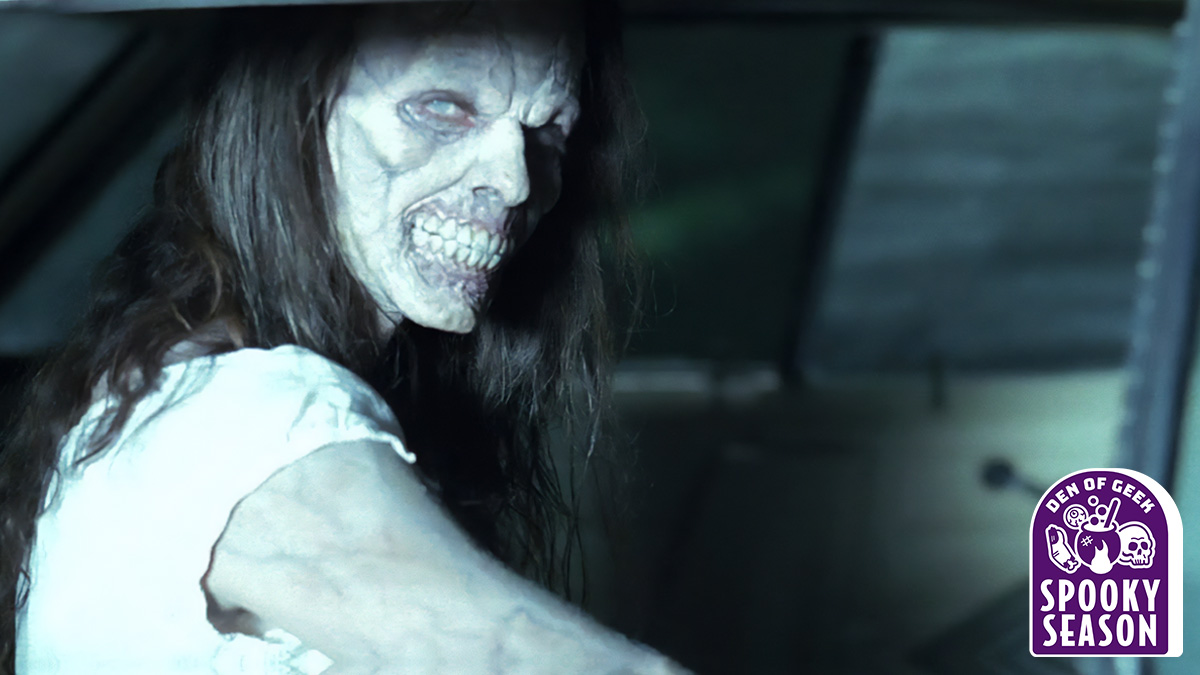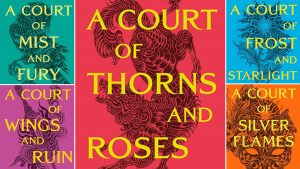
Supernatural had one of the strongest pilot episodes of the 2000s. The first of what would turn out to be 327 episodes already has all the ingredients that would make up the first five seasons of the show mixed and cooked to perfection: a demon, a story about the relationship between the Winchester brothers Sam and Dean (Jared Padalecki and Jensen Ackles), a Monster of the Week, a scary scene in the boys’ beloved Impala, and a great soundtrack heavy on the classic rock.
In its early years, Supernatural was very good at balancing ongoing story arcs with interesting and engaging Monsters of the Week, something absolutely essential for 2000s-era American network television. Most seasons of a show back then would be 20 or more episodes long, and a story arc stretched over that many episodes would be far too thin and drawn out. ‘Filler’ or Monster of the Week episodes were essential to bulk out the season and to give the audience a break from a single ongoing tale, especially if it was a grim or depressing one (as Supernatural’s arc plots often were!).
The Pilot did, of course, set up the arc plot for the season and indeed for the show as whole. Its opening and closing scenes, featuring the murders of the boys’ mother Mary and Sam’s girlfriend Jessica, are core to the entire 15 years’ worth of storytelling that followed. But the bulk of the episode, while we get to know our two main characters Sam and Dean and how they operate, is devoted to a very memorable Monster of the Week.
The Woman in White
Supernatural’s Monsters of the Week were literal monsters from various bits of folklore and mythology from around the world, but especially from America. They included creatures like a wendigo (Season 1 Episode 2, “Wendigo”), a shape-shifter (Season 1 Episode 6, “Skin”) and a djinn (Season 2 Episode 20, “What Is And What Should Never Be”). During the first two seasons, about half of these creatures were ghosts, drawn from all sorts of well-known ghost folklore tropes. We saw phantom hitchhikers (Season 2 Episode 16, “Roadkill”), haunted paintings (Season 1 Episode 19, “Provenance”), creepy ghost children (Season 1 Episode 3, “Dead in the Water” and Season 2 Episode 11, “Playthings”) and even the ghost of America’s early serial killer, H. H. Holmes (Season 2 Episode 6, “No Exit2).
The pilot set up this pattern expertly. The ghost who is the main Monster of the Week for the episode is a clearly recognisable character from folklore from all around the world. The way Sam and Dean are able to identify her pattern and link her to other ghost stories shows the audience straight away how the early seasons of the show are going to work – there’s a ghost, and a death, and Sam and Dean will use their expertise in monster folklore to work out what’s going on and lay the ghost to rest.
The ghost in question in the Pilot is a woman called Constance Welch, whom Sam describes as,
“A Woman In White, or sometimes Weeping Woman… They’re spirits. They’ve been sighted for hundreds of years, dozens of places, in Hawaii, Mexico, lately Arizona, Indiana. All these are different women… But all share the same story… When they were alive, their husbands were unfaithful to them. And these women, basically suffering from temporary insanity murdered their children. Then once they realized what they had done, they took their own lives. So now their spirits are cursed, walking back roads, waterways. And if they find an unfaithful man, they kill him.”
Sam is describing a character well known in Mexican folklore as La Llorona, the Weeping Woman. He gives a pretty accurate description of the most common form of the legend, though there are variations. In some versions, as in the show, La Llorona seeks out and murders men, usually young men, but in others she is a bogeywoman who comes for naughty children. She is strongly associated with rivers and has usually drowned her children in a river; in the show, she ended her own life in a river but drowned her children in the bathtub, probably for practical and budgetary reasons!
La Llorona’s Folk and Mythic Inspirations
There are several different figures from folklore and mythology who seem to have inspired the story of La Llorona. From indigenous Mexican culture, she probably has her roots in Cihuacoatl, the Snake Woman, an ancient Aztec goddess associated with midwives and fertility. When Cihuacoatl appeared before men she was covered in chalk and wore white, and she sometimes walked around at night weeping and wailing. According to Aztec accounts of the omens that foretold the Spanish invasion of Cortés, one sign was that a woman was heard walking through the streets weeping for her children and saying “Oh my children, where am I going to take you?” The priests identified this woman as the goddess Cihuacoatl, who had prophetic abilities.
La Llorona is sometimes conflated with a real woman, La Malinche or Doña Marina. She was a Nahua woman who worked as a translator and possibly also a strategic advisor for Cortés, and had a son with him (Martín). She later married Juan Jaramillo, a Spanish nobleman and one of Cortés’ captains, and died not long after having a daughter with him, Maria. She is sometimes conflated with La Llorona because of Cortés’ betrayal of her by breaking off their relationship and passing her on to Jaramillo, but she did not murder her children and has no other real connection with the story.
Supernatural adds another element to the Weeping Woman’s story, making her a phantom hitchhiker as well. Constance Welch waits by the road near the bridge where she died, hitching for a lift to take her home, but then says “I can never go home.” Apart from being a mother with children rather than a young woman on the way to her prom or her wedding, this fits the mould of the common story of the phantom hitchhiker pretty well – and La Llorona’s tale has actually been combined with the Vanishing Hitchhiker in oral stories from Indiana.
Indigenous and European Folklore Combined
The story of La Llorona as we know it has come of a merging of indigenous and European folklore. On the European side, she shares some traits with a couple of different characters from Greek mythology. The Colchian witch Medea, after her husband Jason (he of The Argonauts fame) abandons her for a younger bride, kills both their children in retaliation in Euripides’ famous play Medea. Stories about La Llorona attacking badly behaved children also echo some aspects of the Lamia, a vampire-like female monster who attacked small children in Greco-Roman mythology.
The other label Sam gives the ghost, a “Woman in White,” appears even more often across global ghost folklore. Sometimes, it’s more of a coincidence and the ghost just happens to be wearing white because it was a popular colour for clothing. One of several ghosts haunting Victorian building Rudd House in South Africa, for example, is a lady who stands on the veranda wearing a white gossamer dress with a sad look on her face. According to Darnley Sullivan in Ghosts of South Africa, a local resident once drove past the house and suddenly found her sitting next to him in the car, though neither of his other two passengers could see her.
Other stories are more sinister. According to Jason R. Ward in Haunted Thailand, three months after seven teenagers broke into an abandoned house near Bangkok in 2015, two of them died in a motorcycle accident. Witnesses said there was, “a lady with long hair dressed in a white dress who was also on the bike,” but her body was never found. A year later, a third member of the group also died in a motorcycle accident, and witnesses reported the same thing, that there was a long-haired woman in white there who disappeared. The next year, two more of the boys died in a house fire and a neighbour said they saw a woman in white entering the building just before the fire. A local medium said the teenagers were being pursued by an angry and vengeful spirit, though thankfully the other two were still alive at the time Ward was writing in 2019.
This long-haired, white-clad, angry ghost sounds quite similar to a stereotypical image of a ghost that has been common in Japan for hundreds of years. Traditional burial clothing in Japan is a white kimono with the right side crossing over the left, instead of the other way around, as it would be for normal wear. It’s perhaps not surprising that white kimonos became associated with ghosts in Japanese stories, theatre, and art. In 1750, artist Maruyama Ōkyo saw a vision at night of his dead lover Oyuki. She was unnaturally pale and wearing a white burial kimono with her long black hair disheveled, and she had no feet. Ōkyo painted what he had seen in the vision, and he started a trend. A woman with disheveled, long, dark hair, a white kimono, and either no feet or no lower body at all became the standard image of a ghost in Japan, and the influence of the stereotype can still be seen in Japanese horror films like The Ring.
Sinister Spirits
A more direct influence on the La Llorona legend seen in Supernatural, though, are Celtic and other European folk tales about White Ladies, probably transmitted to Mexico via the Spanish conquistadors. Many of these are fairly straightforward ghost stories about mysterious women in white dresses haunting castles, but others involve more sinister spirits. For example, as recorded in Gillian Bennett’s The 100 Best British Ghost Stories, back in the 1870s Lewtrenchard House in Devon was apparently haunted by the ghost of Madame Gould, who had refused to go to bed during her final illness and died sitting up in her chair in 1795. She was said to have been seen pacing up and down an avenue of oak trees in the grounds, and also standing by a stream on the edge of a nearby property, dressed all in white, combing her brown hair with a silver comb or letting water trickle through her fingers.
The connection with water, of course, takes us back to La Llorona, who usually kills her children, herself, or both, in water. It also connects otherwise “normal” ghost stories like that of Madame Gould with much older and scarier spirits like the Irish banshee, the Scottish bean-nighe, or the Welsh Y Ladi Wen. There are differences between them – the banshee is especially associated with screaming or screeching, and the bean-nighe is especially associated with washing the blood out of the clothes, but they are all death omens, appearing to someone who is soon to die. They often sit by rivers, combing their hair, or washing the clothes of the doomed person.
One particularly spine-chilling story of the Welsh Y Ladi Wen combines several of these elements. As reported in The Folklore of Wales: Ghosts, by Delyth Badder and Mark Norman, the White Lady ghost in question was apparently that of a maid called Susan Scott, who had drowned herself in a deep pool in North Wales. Her ghost was seen several times during the nineteenth century, moving between the pool and a nearby cave. She seemed to disappear for a while, but then in 1915 four girls on their way to sing Christmas carols met the ghost in the countryside. It was wearing white and had a pair of wings, and told them “Susan Scott is still alive,” and that death would surround them over the next few days, before leaving making a terrible screeching sound. All four lost immediate family members shortly afterwards. This report seems to mix the Woman in White, water, screeching, a death omen, and a suicide, plus a bit of an angel (the wings) for good measure, all into one story!
These White Ladies are seen across Europe in several different places. In Brittany, the Dame Blanches can be found as regular chateau-haunting ghosts, or as spirits similar to some of the same name from Normandy and Lorraine. In Germany they are called Weisse Frauen, and in the Netherlands Witte Wieven, and these are often elves or fae. They do all sorts of things depending on the local folklore – helping or hindering mortals, guarding treasure, haunting castles, or even lurking around a forest or bridge trying to get passers-by to dance with them. It is likely that some of these stories made their way over to Mexico with the Spanish, and merged with Cihuacoatl into the story of La Llorona.
Supernatural’s pilot is surprisingly faithful to the general outline of the La Llorona story, especially the version told in Indiana where she is merged with a phantom hitchhiker. Not all of its Monsters of the Week would be quite so faithful to the mythology or folklore that inspired them – don’t get us started on what they did with Calliope the Greek Muse in Season 10’s “Fan Fiction”! But the story of La Llorona, the Weeping Woman, was a really strong start to the show, and it’s a nice reminder of how effective a really well done Monster of the Week episode can be.
Supernatural is streaming now on Netflix in the US, and on Prime Video in the UK.
The post The Folklore Behind Supernatural’s First Ever Monster appeared first on Den of Geek.







